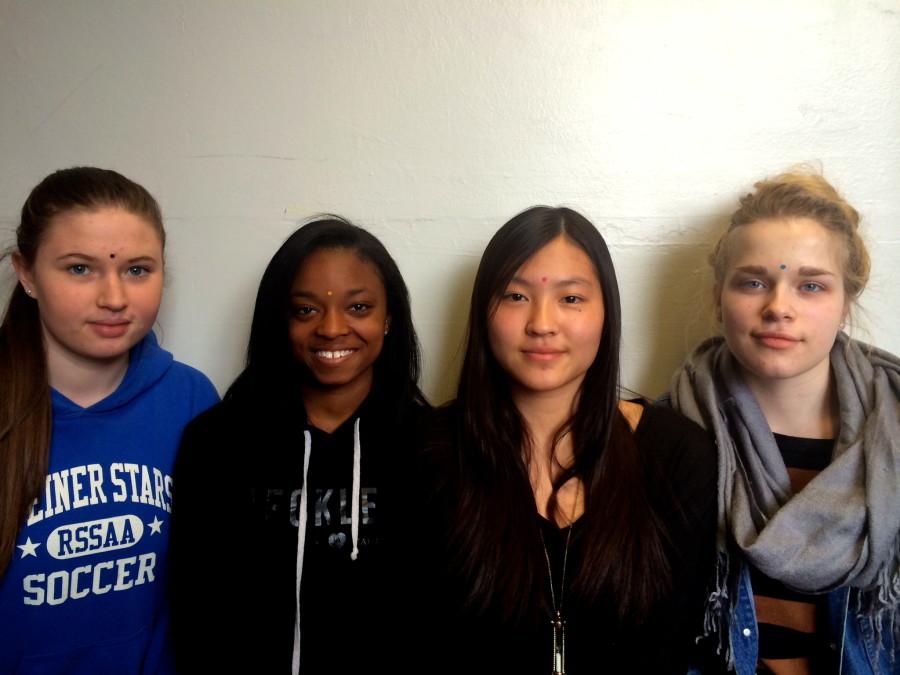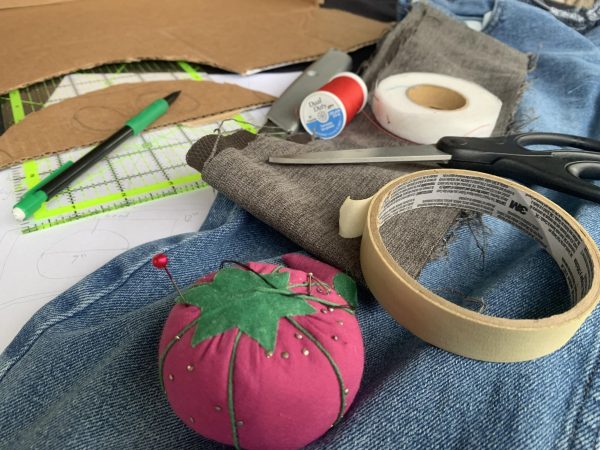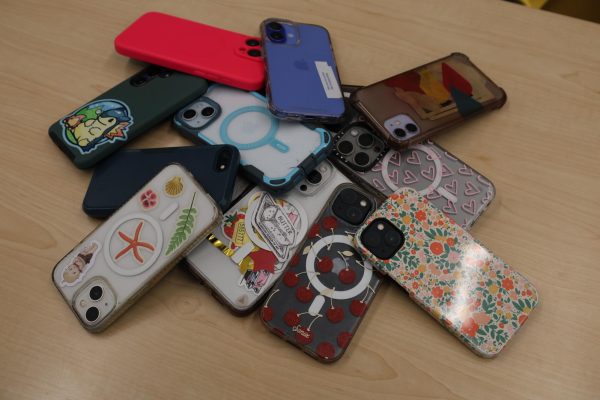#reclaimthebindi is a Culture Shock
(Left to right) Katie Gerdenich, Elonah Kirk, Natalie Potter and Grace Koepele wear a bindi after learning about its significance.
A white girl wore a bindi, and social media exploded.
“My culture is not your accessory,” say supporters of the new trending hashtag #reclaimthebindi, in response to this new Coachella fashion. The fashion statement has been mushed into the category of cultural appropriation, but it shouldn’t be. As of now, the bindi is seen as a fashion statement even in India because it has multiplied from a simple red dot worn by married women to protect them and their husbands or to symbolize the third eye, to packages of jewel studded shapes that have taken on every color possible.
Civilization grows through the acts of borrowing – people have always shared, whether it is something that leaves a huge impact on society, like the alphabet, or like a pair of earrings. How will people understand others, without exposing themselves to other traditions or cultures?
Creativity stems from borrowing from different diverse sources. Borrowing from each other creates a paradigm for change – and change is a good thing. Cultures can be a trend, and still be respected; it helps people have a common identity. Yoga stemmed from India, yet it is now a worldwide practice. Henna originated from many cultures long ago, and is now a fad among many people in the United States.
Amandla Stenberg, who acts as Rue in the Hunger Games, released a video called “Don’t Cash My Cornrows” that went viral. “The line between cultural appropriation and cultural exchange is always going to be blurred,” she said. She explained that appropriation occurs when the style that leads to racist generalizations is seen as cool, but when privileged people take it for themselves it is seen negatively.
The girls at Coachella are not trying to represent all of Indian or Hindu culture, and while it is always good to learn about culture they did not intend to mock or make fun of Indians who have been wearing bindis from long before them.
Community High School teacher Maneesha Mankad understands that culture is hard to represent accurately. “When people try to understand people’s cultures and show that we’re representing diversity at a very superficial level it ends up becoming a stereotype no matter how hard you try,” she said. Embracing other thoughts, ideas and ways of life creates a new way of life that will constantly be changing. “We express ourselves differently,” Mankad said. “I really cannot claim certain things that belong just to me.”
Apoorva Asthana, a junior at Pioneer High School, is a student who also goes to Sunday school every week and learns about the significance in her culture. “There is nothing wrong with sharing culture,” she said. “When we do have different cultural aspects or values we should make sure people should understand the significance of those values.”
While cultural appropriation is still an actual issue, cultural assimilation is beneficial to educate others and move society forward. Yes, the bindi has sacred roots, but the girls at Coachella are not representing racists or bullies and instead are looking at the bindi from a different point of view: fashion. And even though there are instances where people of color or non-Christian religions receive different treatments at airports or in society, discriminating on solely a bindi is not notable. In fact, the girls at Coachella might even motivate people to learn about the significance behind the bindi, and still appreciate it while using its concept for fashion. Anyway, mimicry is the highest form of flattery.













